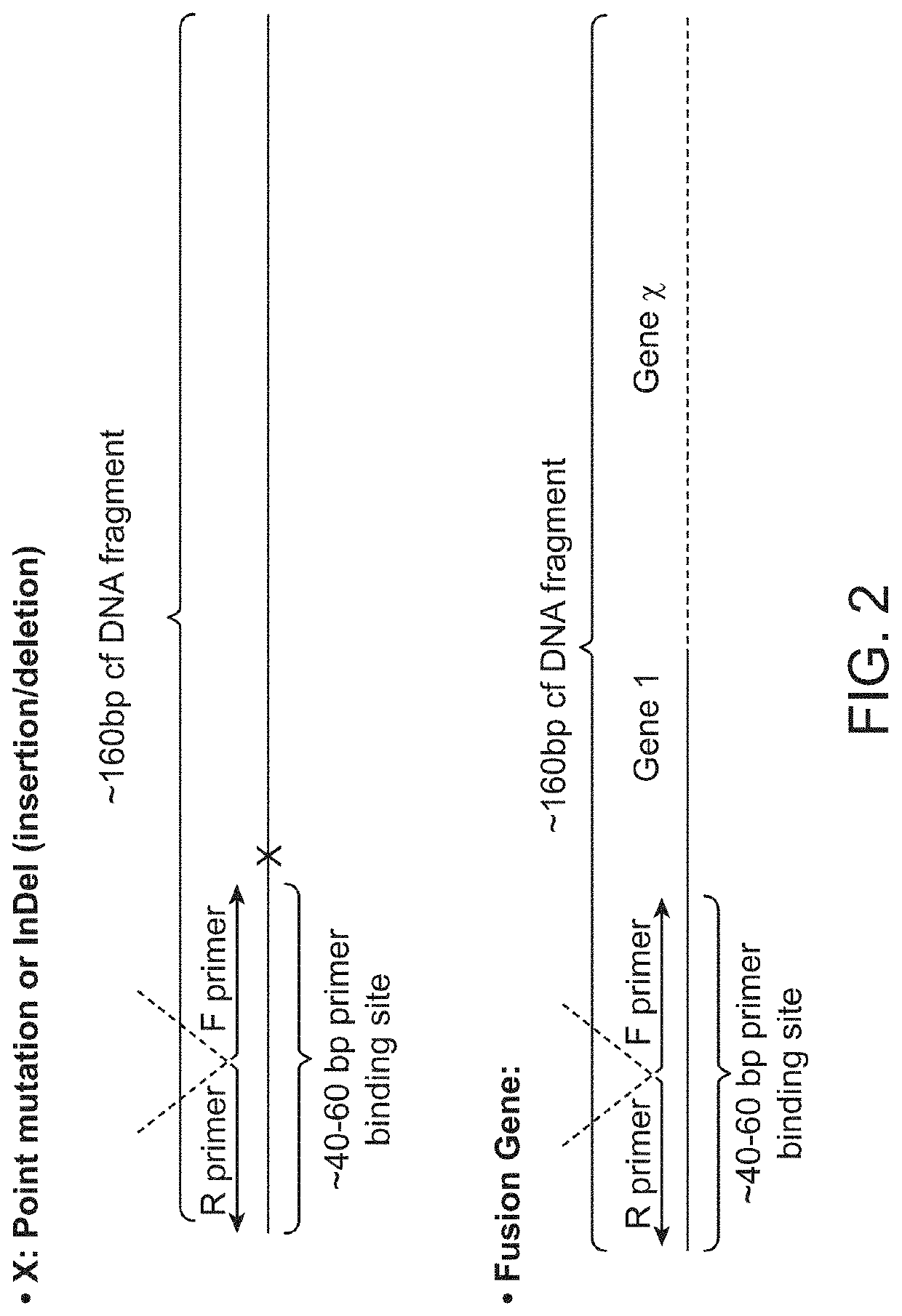Methods and compositions for enrichment of amplification products
a technology of amplification products and compositions, applied in the field of methods and compositions for enriching amplification products, can solve the problems of large-scale parallel sequencing with significant limitations, difficult subsequent analysis of longer concatemers, and large error frequency of common-used techniques, so as to reduce the error in sequencing rare sequence variants and fusion genes
- Summary
- Abstract
- Description
- Claims
- Application Information
AI Technical Summary
Benefits of technology
Problems solved by technology
Method used
Image
Examples
example 1
n of Products from One Cycle of RCA Amplification and Multiple Cycles of RCA Amplification
[0129]Genomic DNA was sonicated to an average fragment size of approximately 180 bp. Fragmented DNA was purified with 0.9× Ampure beads to remove fragments smaller than 100 bp. Sonicated genomic DNA was then ligated to form circular target polynucleotides. For ligation, 12 μl of purified DNA fragments (>10 ng) was denatured by heating at 95° C. for 30 seconds and chilling on ice for 2 minutes. Then, 8 μl of ligation mix containing 2 μl of 10× CircLigase buffer, 4 μl of 5M Betaine, 1 μl of 50 mM MnCl2, and 1 μl of CircLigase II was added to the denatured DNA samples and the reactions are incubated at 60° C. for at least 12 hours. At the end the of ligation process, remaining linear single stranded DNA molecules were removed by an exonuclease treatment step. For exonuclease treatment, ligation products were heated at 80° C. for 45 seconds and following that was the addition of 1 μl of exonuclease...
example 2
n of Products from Multiple Cycles of RCA Using Either Primers with a Stem Structure or Primers without a Stem Structure
[0135]Genomic DNA was sonicated to an average fragment size of approximately 150 bp. Fragmented DNA was purified with 0.9× Ampure beads to remove fragments smaller than 100 bp. Sonicated genomic DNA was then ligated to form circular target polynucleotides. For ligation, 12 μl of purified DNA fragments (>10 ng) was denatured by heating at 95° C. for 30 seconds and chilling on ice for 2 minutes. Then, 8 μl of ligation mix containing 2 μl of 10× CircLigase buffer, 4 μl of 5M Betaine, 1 μl of 50 mM MnCl2, and 1 μl of CircLigase II was added to the denatured DNA samples and the reactions are incubated at 60° C. for at least 12 hours. At the end the of ligation process, remaining linear single stranded DNA molecules were removed by an exonuclease treatment step. For exonuclease treatment, ligation products were heated at 80° C. for 45 seconds and following that was the a...
example 3
Low-Frequency Fusion Allele from Mixed Genomic DNA Samples
[0142]Chromosome rearrangements are observed in many cancer types. This example describes a method for detecting a fusion allele using circularized DNA molecules and back-to-back (B2B) primer design. This method enables fusion detection from DNA samples without prior knowledge of the ‘partner’ gene and can be applied for screening gene rearrangement events in cell free DNA or genomic DNA samples.
[0143]Genomic DNA from an EML4 / ALK DNA standard reference (HD664 Horizon Diagnostics) containing 50% EML4 / ALK fusion allele and a reference genomic DNA were sonicated to an average fragment size of approximately 150 bp. Fragmented DNA was purified with 0.9× Ampure beads to remove fragments that were smaller than 100 bp. For ligation, 12 μl of purified DNA fragments (>10 ng) was denatured by heating at 95° C. for 30 seconds and chilling on ice for 2 minutes. Then, 8 μl of ligation mix containing 2 μl of 10× CircLigase buffer, 4 μl of 5...
PUM
| Property | Measurement | Unit |
|---|---|---|
| temperature | aaaaa | aaaaa |
| temperature | aaaaa | aaaaa |
| temperature | aaaaa | aaaaa |
Abstract
Description
Claims
Application Information
 Login to View More
Login to View More - R&D
- Intellectual Property
- Life Sciences
- Materials
- Tech Scout
- Unparalleled Data Quality
- Higher Quality Content
- 60% Fewer Hallucinations
Browse by: Latest US Patents, China's latest patents, Technical Efficacy Thesaurus, Application Domain, Technology Topic, Popular Technical Reports.
© 2025 PatSnap. All rights reserved.Legal|Privacy policy|Modern Slavery Act Transparency Statement|Sitemap|About US| Contact US: help@patsnap.com



